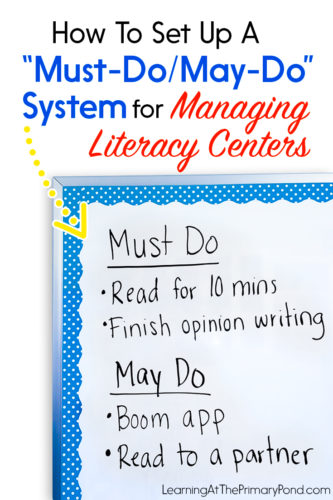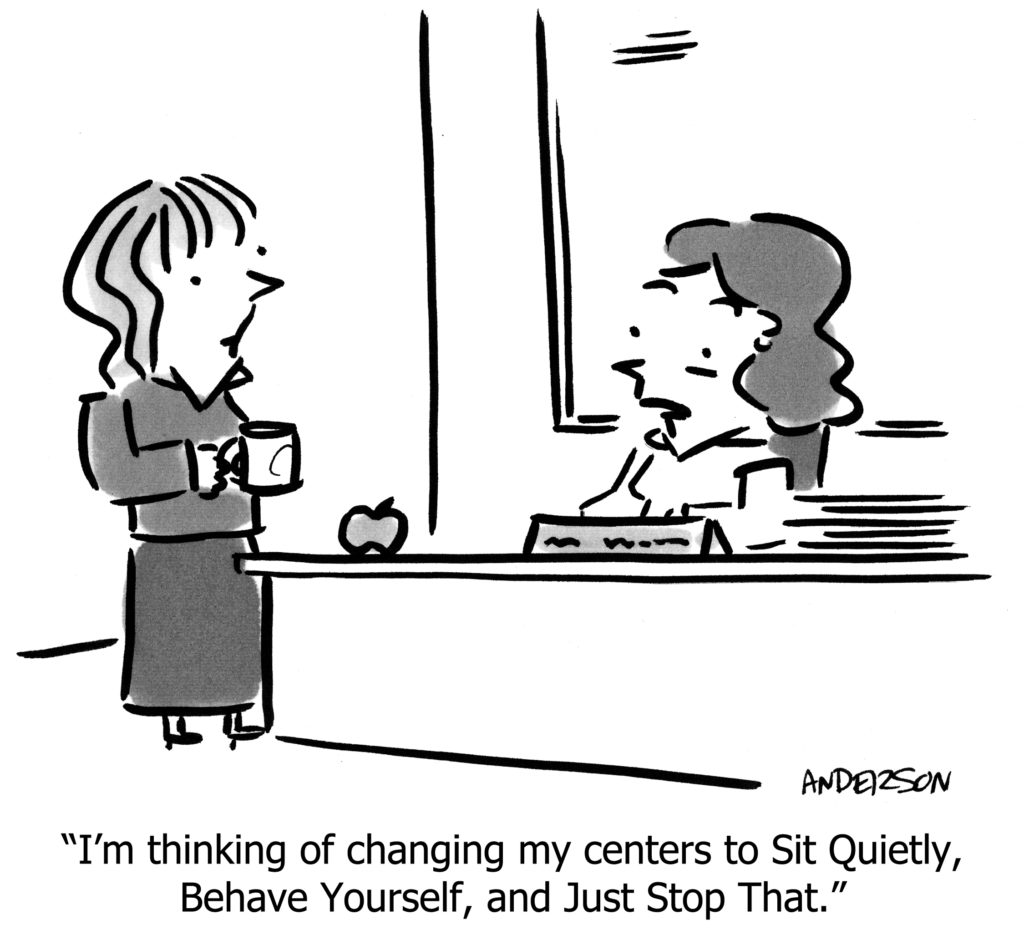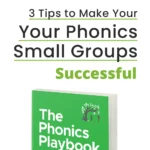Have you ever heard of a “must-do” / “may-do” system? It’s a strategy for managing your literacy centers.
It can help you ensure that students accomplish certain things during centers time but also have some choice in other tasks!
Personally, I’ve only used a must-do / may-do system during one school year. I’ve done a more traditional centers rotation for most other years.
But if you’ve heard me speak on a webinar or read my other blog posts, then you know that I’m always saying, “There’s no one right way to do things in your classroom.” That includes centers, and for today’s post, I’m absolutely thrilled to be able to share how another teacher runs her centers!!
Teacher and blog reader Mollie P. wrote us an article about how she uses a must-do / may-do system to manage her centers. But she actually doesn’t start the year like this—she progresses to it later on. (Love this!!) Keep reading to learn her awesome tips and strategies!

Here’s what Mollie has to say:
First off, let me say thanks to the amazing Alison Ryan for allowing me to guest blog with her! I could write an entire post about how her webinars and TpT products have inspired my literacy instruction, but today I’m focusing on literacy centers. I’m no expert, but in my short four years of teaching, I’ve tried countless different approaches to centers and finally found what works for me—so I hope it’s helpful for you too! Especially if you’ve ever felt like this:

At the beginning of the year, I use timed rotations, and then transition to a must-do/may-do system later in the year. Keep reading for tips on timed rotations, or scroll on down if you’re only interested in the must-do/may-do system.

My timed rotations are a modified version of the Daily 5. I actually have 7 stations, since I added time on iStation, which is our standardized testing platform as well as individualized instruction. I also added a resource called Listen and Learn by Mrs. Oldham, which every student does every day to reinforce our phonics pattern. I still have a more traditional Listen to Reading center with books on CD, an Epic books account, and QR codes, which my students get every other day. In the example below, it alternates with their Technology Center time on iStation. They also alternate between Independent/Partner Reading and Word Work/Writing every other day. I’ll refer back to this example rotation chart to help you make sense of the tips below!
Tip #1: Groups of 2 or 3! One year I tried to use the Daily 5 with more fidelity, but having just 5 centers meant that 4 or 5 students were in each center. The volume level was higher, and there was more off-task behavior even though that year was my best-behaved class overall! Separating them out around the room really helps keep things quiet and focused. However, I’ve had no problems letting bigger groups use technology at the same time because they all have headphones. In the example above, all 5 students in the same row go to Listen and Learn at the same time, then separate again for the other centers.
Tip #2: You are not a center! This lets you mix up the groups so the kids can work with others at different ability levels. In the example above, the names are color-coded by ability level (not my real students’ names—just characters from Friends and The Flash J). The sweet little strugglers in red and orange can see fluent reading and writing modeled by their peers, but the blues and greens can still be challenged by providing differentiated word lists, writing paper, books, etc. When I meet with a group, I can pull whoever I need from whatever they’re doing. This is key to making your groups flexible! I used to group students for instruction based on DRA only, but I’ve recently learned that it can be more beneficial to group kids with the same specific needs in phonological awareness and phonics. This way, I can easily change my groups to fit whatever skills we’re working on. And since I’m not a center, I’m not limited by the timer so I can keep some groups longer than others.
Tip #3: Use a timer! I found that these visual timers I downloaded (for free!) from www.a6training.co.uk/resources/ImprovedPowerPointTimers.pptx really helped my students manage their time in the center and work harder to finish tasks as they saw time running out. It also helped me see whether the time limit matched my students’ needs or how much time was left when most students were at a good stopping point. Eventually, we reached a point when the time limits just weren’t appropriate for all my students. Then I decided we were ready to change to a must-do/may-do system I had seen in a classroom down the hall.

Tip #4: Increase their independence throughout the year. I can’t tell you exactly when or what your class will need, but my first-graders last year were ready for more independence around January. Instead of timed rotations, I started giving them an order of activities to complete at their own pace. We have flexible seating, so they can spread out around the room and all start working with their words at the same time. Whenever they finish, they get a Chromebook to complete an individualized reading activity on iStation, and then an assignment on Vocabulary Spelling City. I love this website and think it’s worth the subscription because I can create assignments quickly, differentiate them for each student if needed, and get immediate data on exactly which words each student is missing! I am blessed with a class set of Chromebooks, which helps this system run more smoothly, but I can see it working with less technology too because all the students finish the word work activity at different times. And since their last “must-do” is to read, you could always have them start reading while waiting for a turn on a device.
Tip #5: Give them choices! My favorite part of the must-do/may-do system is the may-do time! Besides giving my students choices, it also motivates them to finish the “must-do” assignments and use their time wisely. Classroom management win! Almost everyone in my class last year said that they preferred this system over the timed rotations. They can still choose to read with a buddy, use the manipulatives to build words, or listen to books, but they’re much more focused and on-task since they’ve worked to earn those choices. They rarely choose to work on writing, but we have a whole-class writing workshop at another time. (I have Alison’s reading comprehension and writing curriculum bundle, and it’s fantastic!) So, they still have access to all of the Daily 5 components, but in a format that’s working better for us. I will say that I’m not sure first-graders would be successful with this much independence at the beginning of the year, so I start in the fall with timed rotations and transition to must-do/may-do as they mature. I hope you can experiment with some of the ideas in this blog and let me know what works for you!
Mollie, thanks so much for sharing your knowledge and experiences with us!! The idea of adapting your schedule throughout the year is something that I do frequently, and I’ve seen really good results with it.
Do you use a must-do / may-do system for centers? Or another type of system? I’d love to have you share in the comments!
And if you’re looking for “done for you” centers materials that are organized, engaging for K-2 students, and come with lesson plans to teach the centers, check out my literacy center bundles HERE.
Happy teaching!!












